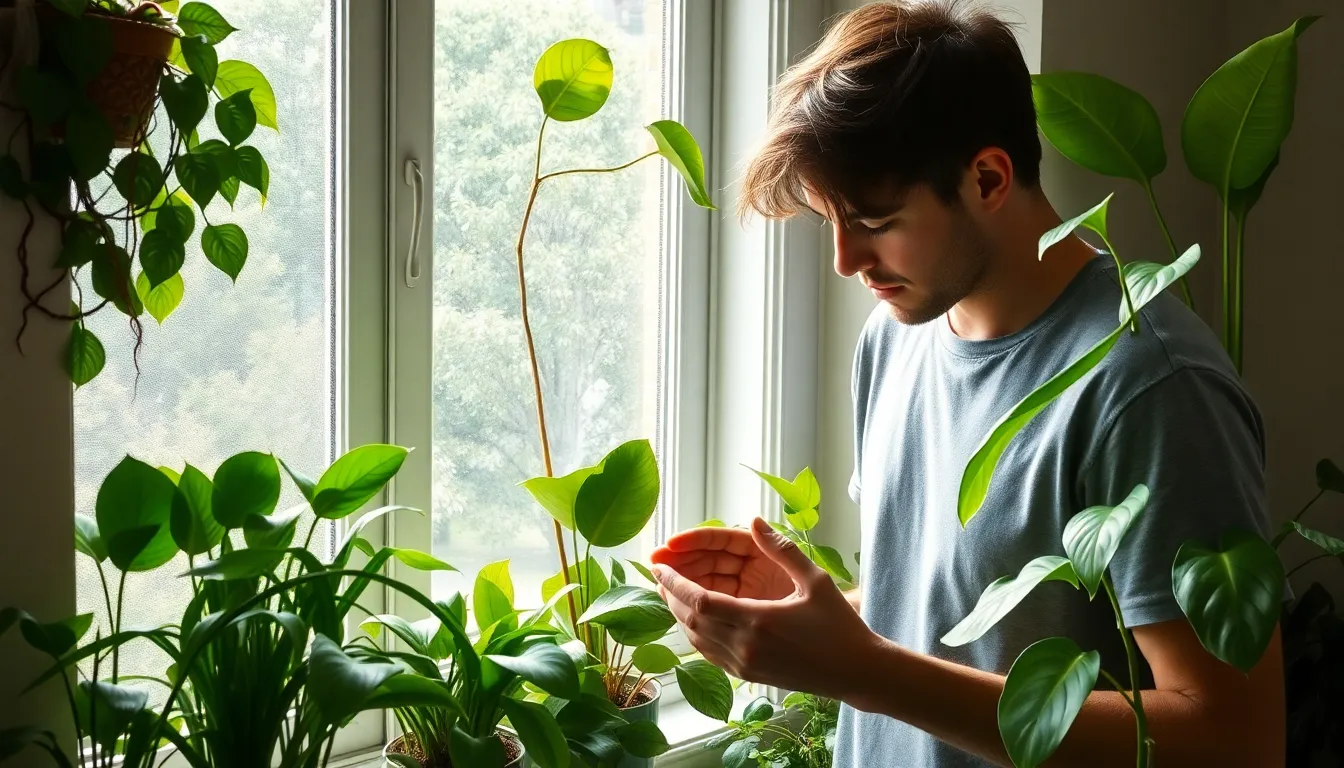Table of Contents
ToggleHouse plants are more than just pretty decorations; they’re like little green companions that breathe life into any space. But let’s face it, identifying them can feel like deciphering a secret code. Is that leafy wonder a pothos or a philodendron? One wrong guess, and you might find yourself in a plant-based identity crisis.
Understanding House Plants
House plants play a significant role in enhancing indoor environments. Identifying various species can pose challenges for many plant enthusiasts.
Common Types of House Plants
Some popular house plants include pothos, philodendron, and snake plants. These plants offer varied aesthetics and care requirements. Other common choices are peace lilies and spider plants, known for their air-purifying qualities. Many individuals enjoy the vibrant colors of flowering plants like African violets. Understanding the characteristics of these plants helps in proper care and identification.
Benefits of Having House Plants
House plants provide numerous benefits that enhance well-being. They improve indoor air quality by filtering toxins and releasing oxygen. Plants can reduce stress levels, creating a more calming atmosphere. Studies indicate that having greenery indoors increases productivity and focus. Additionally, house plants add aesthetic value to living spaces, contributing to overall decor. They encourage a connection to nature, which promotes mental health and well-being.
How to Identify House Plants

Identifying house plants requires an understanding of unique plant features. Noticing specific traits makes identification easier.
Key Characteristics to Look For
Examine leaf shape and size for differentiation. Pothos leaves tend to be heart-shaped, while philodendron exhibits a broader, more oval form. Leaf color varies among species; pothos often shows variegation, whereas snake plants display distinct green and yellow strips. Observe growth patterns as well; some plants are trailing, like pothos, while others grow upright, like snake plants. Flowering habits provide additional clues; peace lilies bloom under certain conditions, contributing to plant identification.
Useful Identification Tools
Utilize apps designed for plant identification. Apps like PlantSnap and PictureThis offer easy recognition by analyzing photos. Books on house plants serve as excellent resources, showcasing images and care information for various species. Joining online plant communities fosters interaction with enthusiasts who can provide insights on identifying plants. Social media platforms allow users to share images and ask for help, further enhancing knowledge. Utilizing a magnifying glass can reveal minute details not visible to the naked eye, making it a handy tool for serious plant identifiers.
Popular Identification Methods
Identifying house plants can become easier with the right tools. Utilizing technology and online resources proves highly effective.
Mobile Apps for Plant Identification
Mobile apps streamline the identification process. PlantSnap allows users to pinpoint species simply by uploading a photo. PictureThis offers detailed information, including care tips and growth habitats. These apps often incorporate a community feature, enabling users to seek advice or share experiences with fellow plant enthusiasts. With these tools, anyone can enhance their plant knowledge conveniently and quickly.
Online Plant Databases
Online plant databases serve as comprehensive resources for identification. Websites like the Missouri Botanical Garden provide extensive visual catalogs of various species. Users can filter searches by characteristics such as leaf shape and color. Additionally, databases often include care guides, which promote better understanding and maintenance of house plants. Such resources create a valuable foundation for recognizing and learning about plants accurately.
Tips for Caring for Your House Plants
Caring for house plants requires attention and understanding of their specific needs. Proper care enhances their growth and longevity.
Essential Care Guidelines
Water plants when the top inch of soil feels dry. Most house plants thrive in indirect sunlight. Adjust lighting based on each plant’s requirements. Fertilize every four to six weeks during the growing season. Rotate plants to ensure even light exposure. Maintain humidity levels by misting leaves or placing a tray of water nearby. Regularly clean leaves to remove dust, which helps with photosynthesis.
Troubleshooting Common Issues
Identify yellowing leaves as a sign of overwatering or inadequate nutrients. Check for wilting, which can indicate underwatering or root rot. Inspect plants for pests, such as spider mites or aphids. Treat infestations with insecticidal soap or neem oil. Recognize leaf drop as a response to changes in light or temperature. If plants appear leggy, increase light exposure. Address fungal issues promptly by improving airflow and reducing moisture.
Identifying house plants can be a rewarding journey that deepens the connection to nature. By understanding their unique features and utilizing modern tools like plant identification apps, anyone can enhance their plant care experience.
Knowledge of specific care requirements and common issues ensures plants thrive in their environments. With the right resources and a bit of patience, anyone can transform their living space into a vibrant oasis filled with healthy, beautiful plants. Embracing this knowledge not only improves indoor aesthetics but also contributes to overall well-being.







